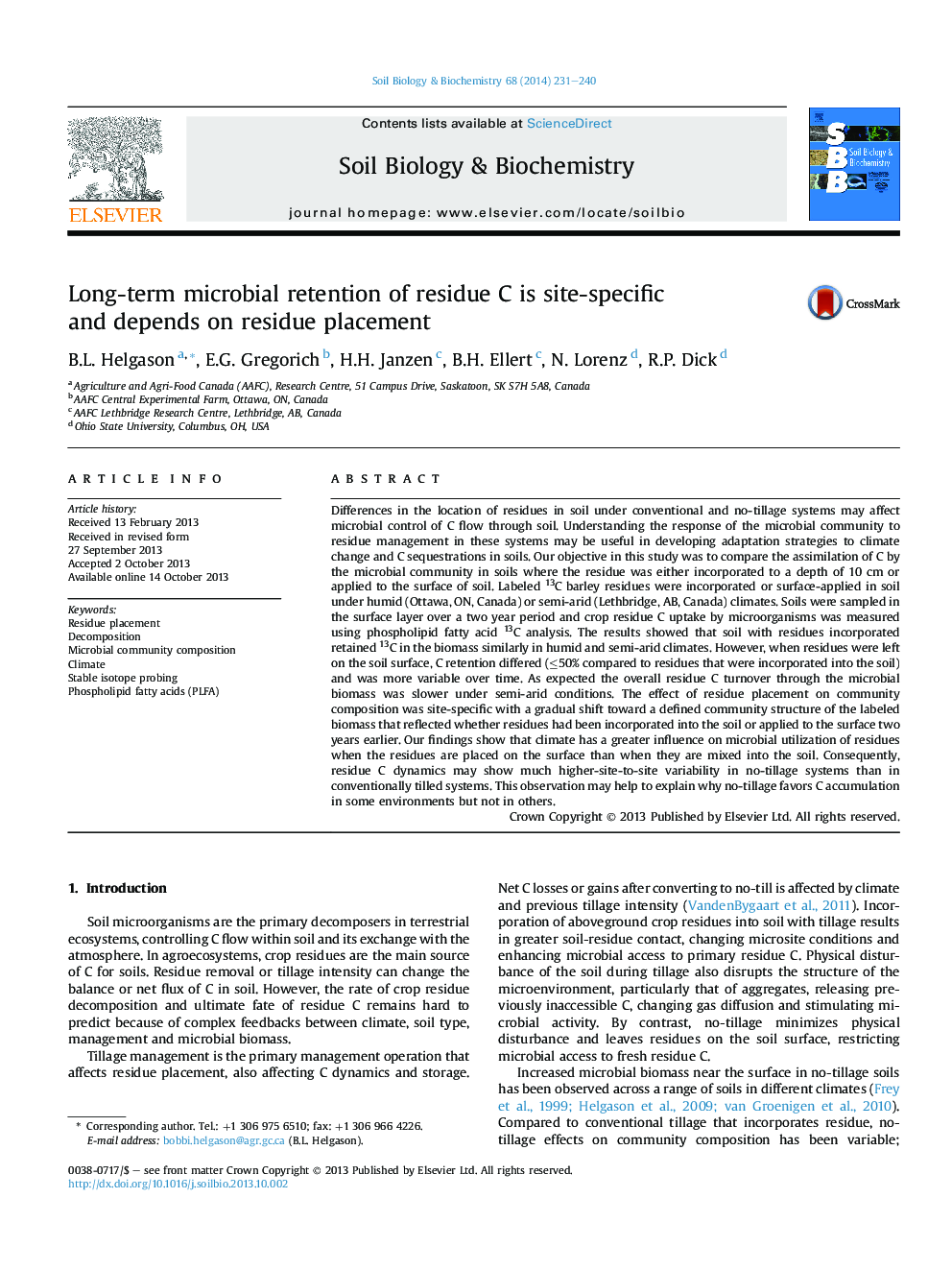| کد مقاله | کد نشریه | سال انتشار | مقاله انگلیسی | نسخه تمام متن |
|---|---|---|---|---|
| 8365067 | 1542616 | 2014 | 10 صفحه PDF | دانلود رایگان |
عنوان انگلیسی مقاله ISI
Long-term microbial retention of residue C is site-specific and depends on residue placement
دانلود مقاله + سفارش ترجمه
دانلود مقاله ISI انگلیسی
رایگان برای ایرانیان
کلمات کلیدی
موضوعات مرتبط
علوم زیستی و بیوفناوری
علوم کشاورزی و بیولوژیک
دانش خاک شناسی
پیش نمایش صفحه اول مقاله

چکیده انگلیسی
Differences in the location of residues in soil under conventional and no-tillage systems may affect microbial control of C flow through soil. Understanding the response of the microbial community to residue management in these systems may be useful in developing adaptation strategies to climate change and C sequestrations in soils. Our objective in this study was to compare the assimilation of C by the microbial community in soils where the residue was either incorporated to a depth of 10 cm or applied to the surface of soil. Labeled 13C barley residues were incorporated or surface-applied in soil under humid (Ottawa, ON, Canada) or semi-arid (Lethbridge, AB, Canada) climates. Soils were sampled in the surface layer over a two year period and crop residue C uptake by microorganisms was measured using phospholipid fatty acid 13C analysis. The results showed that soil with residues incorporated retained 13C in the biomass similarly in humid and semi-arid climates. However, when residues were left on the soil surface, C retention differed (â¤50% compared to residues that were incorporated into the soil) and was more variable over time. As expected the overall residue C turnover through the microbial biomass was slower under semi-arid conditions. The effect of residue placement on community composition was site-specific with a gradual shift toward a defined community structure of the labeled biomass that reflected whether residues had been incorporated into the soil or applied to the surface two years earlier. Our findings show that climate has a greater influence on microbial utilization of residues when the residues are placed on the surface than when they are mixed into the soil. Consequently, residue C dynamics may show much higher-site-to-site variability in no-tillage systems than in conventionally tilled systems. This observation may help to explain why no-tillage favors C accumulation in some environments but not in others.
ناشر
Database: Elsevier - ScienceDirect (ساینس دایرکت)
Journal: Soil Biology and Biochemistry - Volume 68, January 2014, Pages 231-240
Journal: Soil Biology and Biochemistry - Volume 68, January 2014, Pages 231-240
نویسندگان
B.L. Helgason, E.G. Gregorich, H.H. Janzen, B.H. Ellert, N. Lorenz, R.P. Dick,